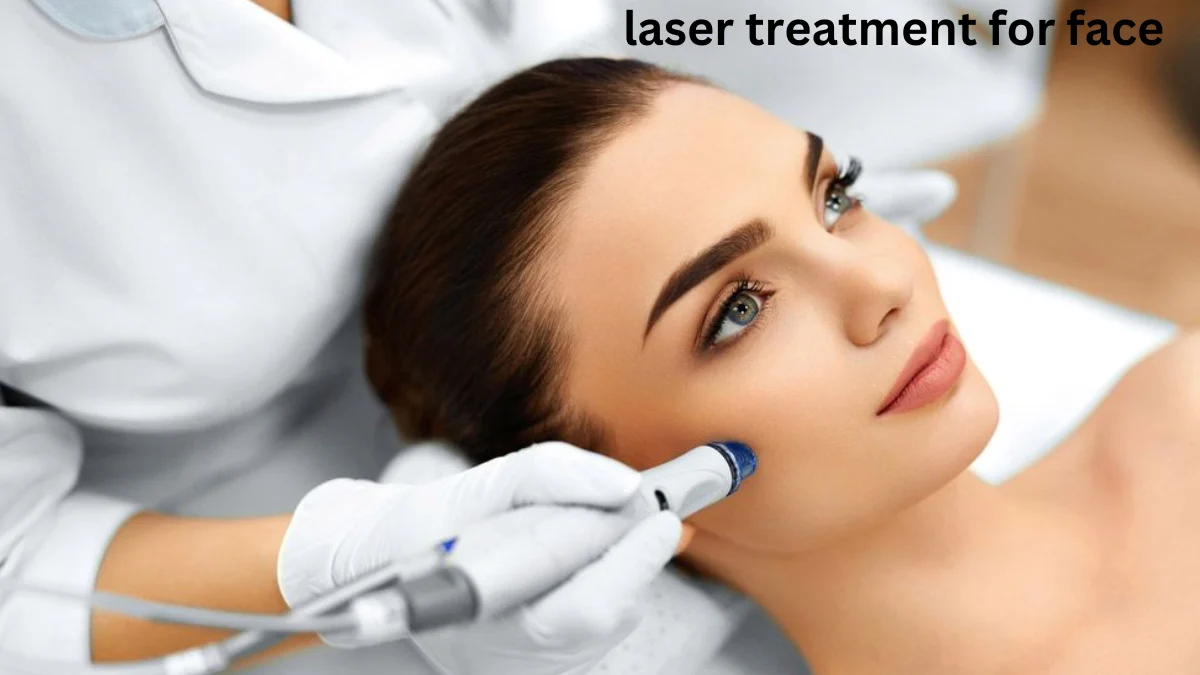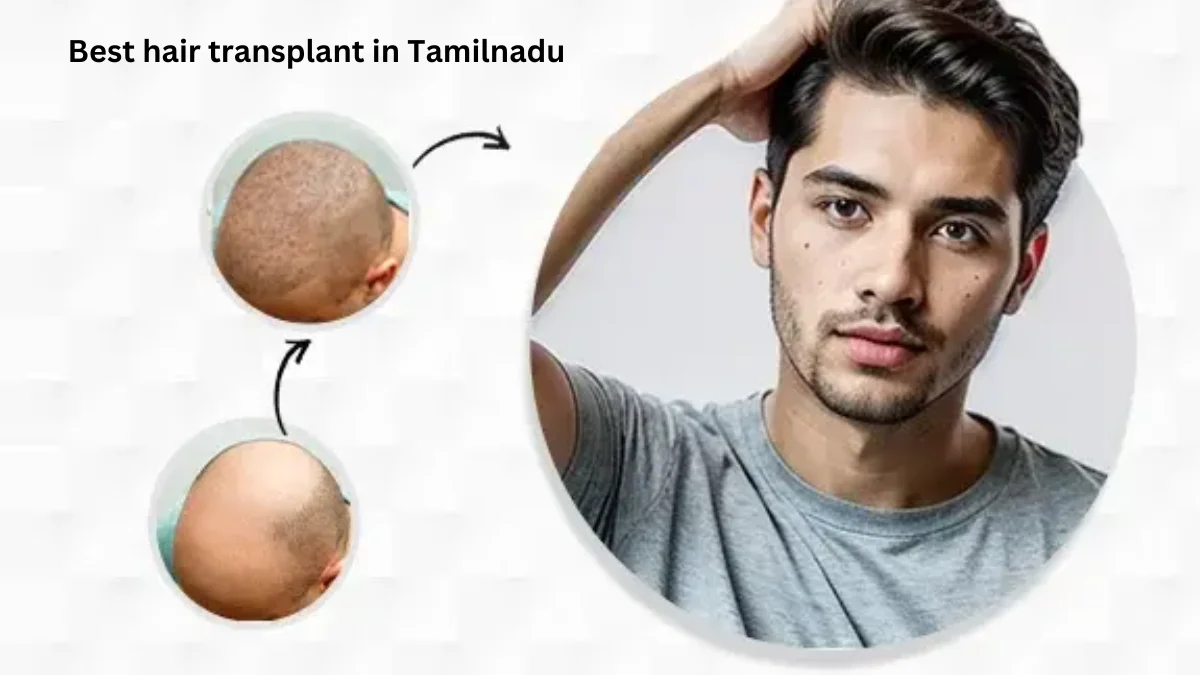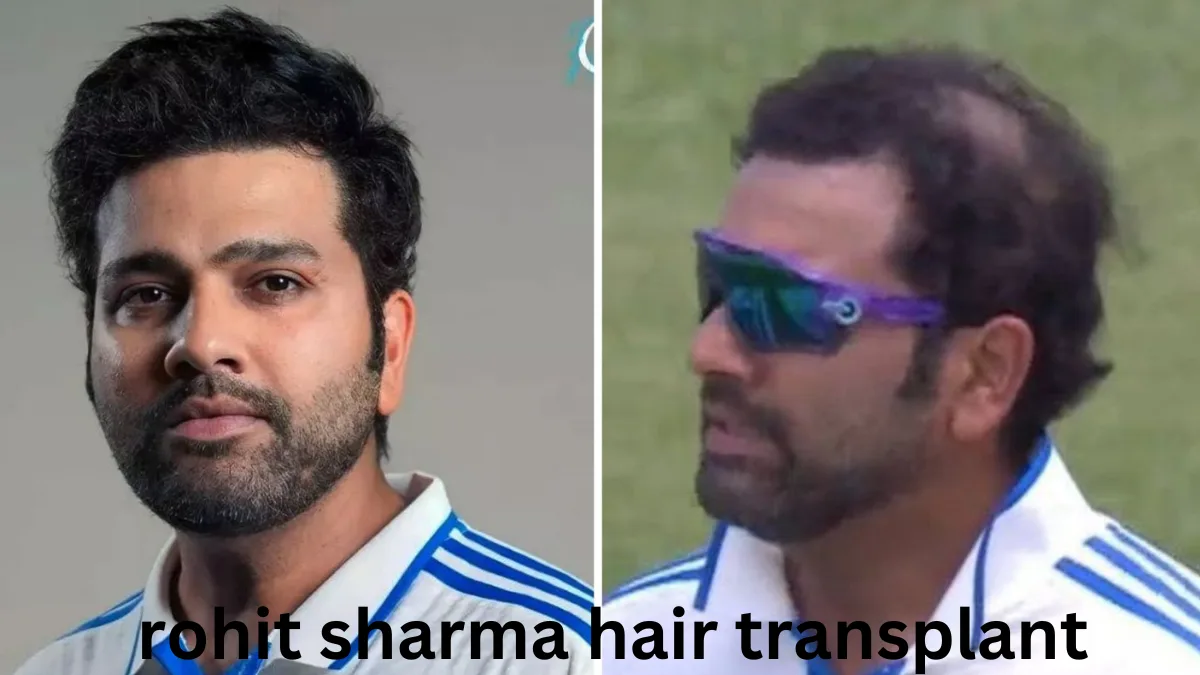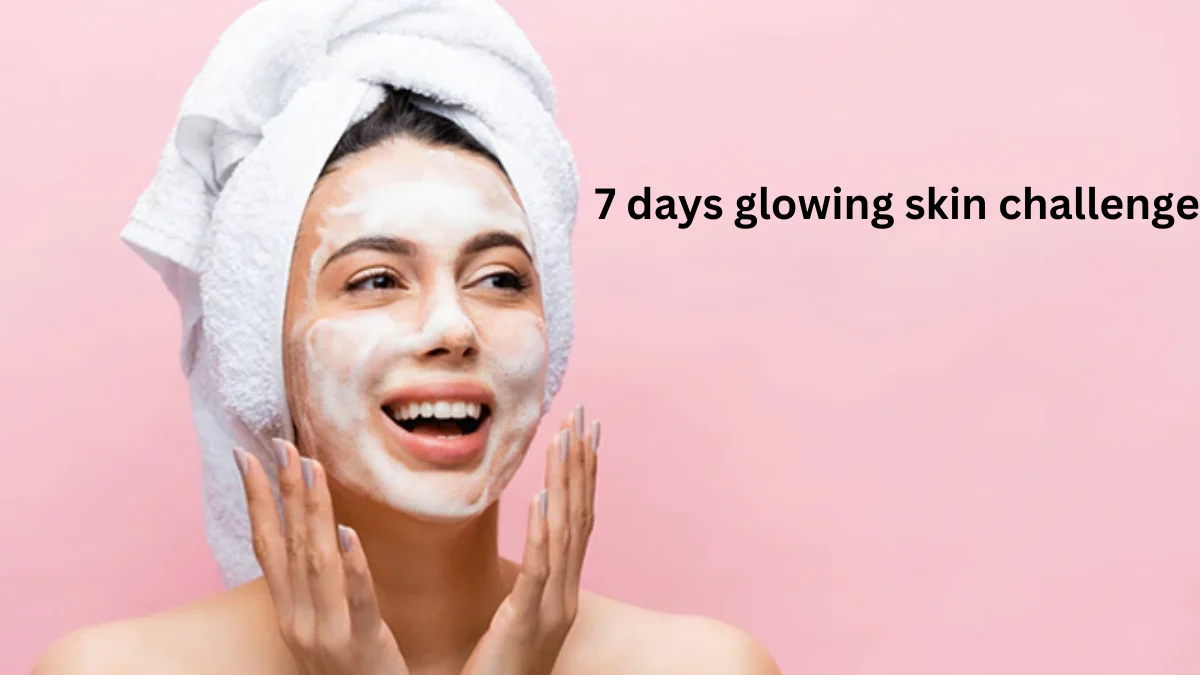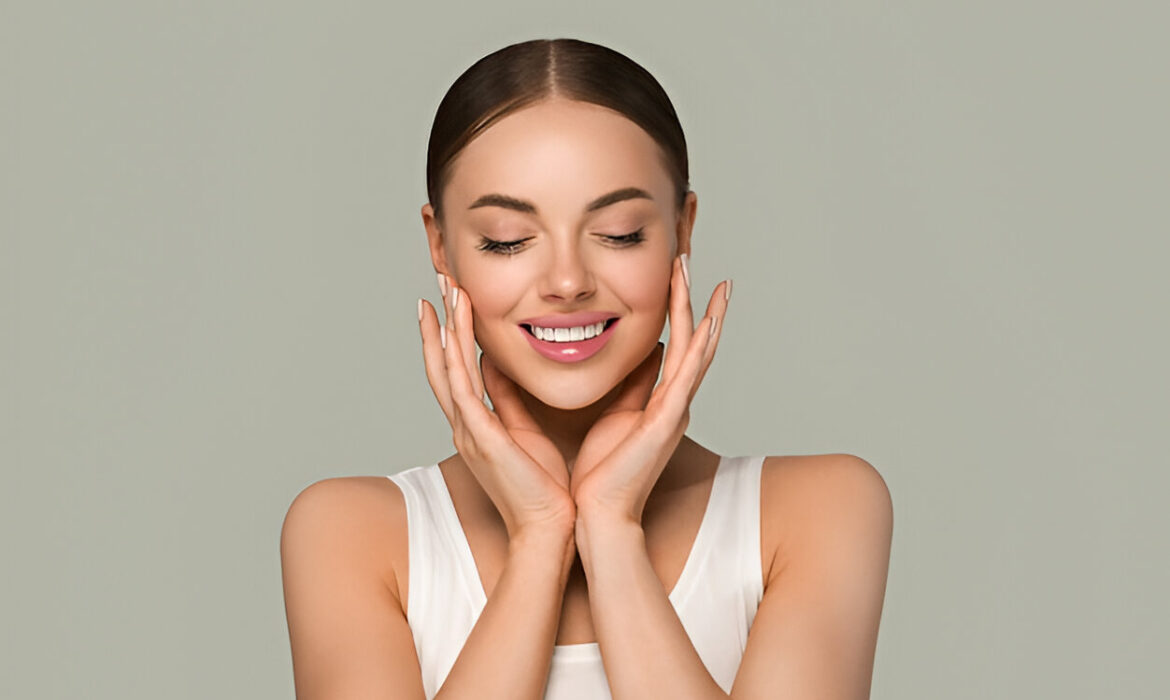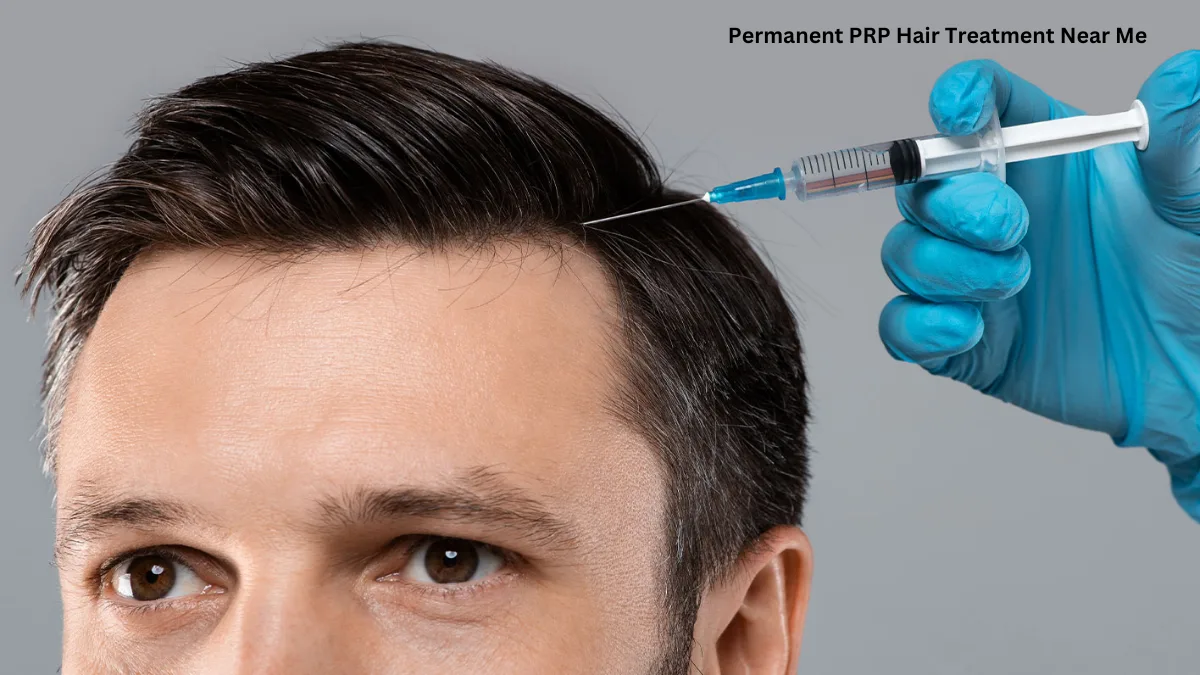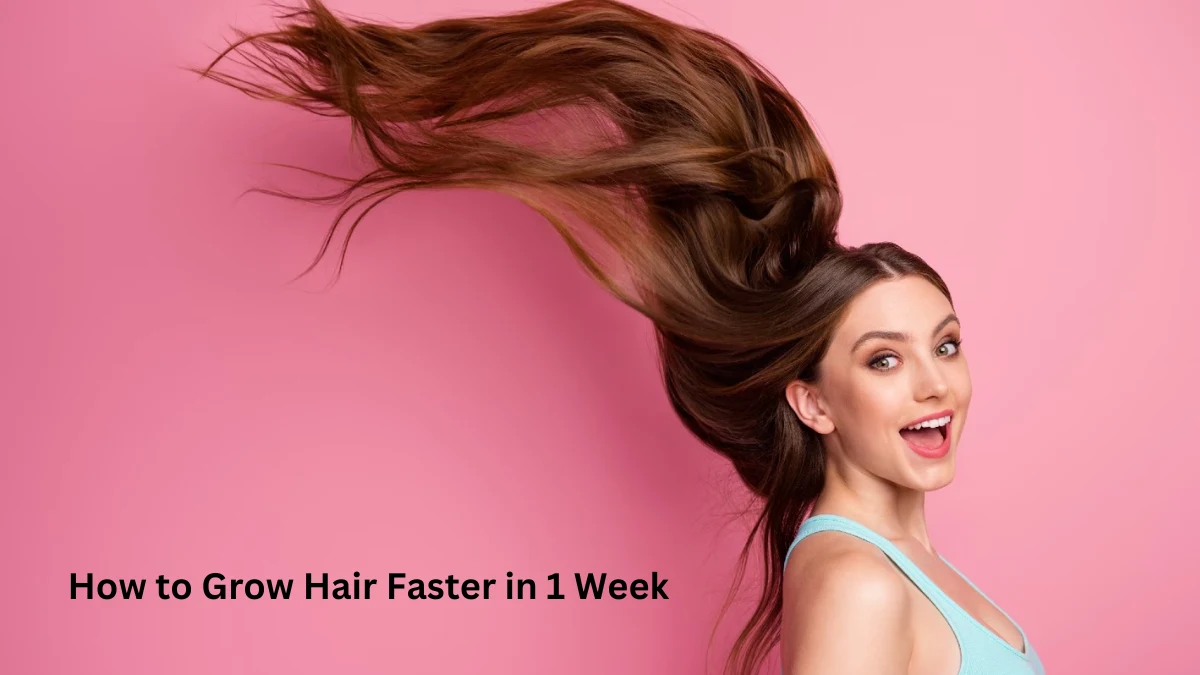Explore Virat Kohli hair transplant journey, expert insights, FUE technique, graft estimates & before-after results. Learn from a celebrity case study.
Virat Kohli Hair Transplant: Expert Analysis
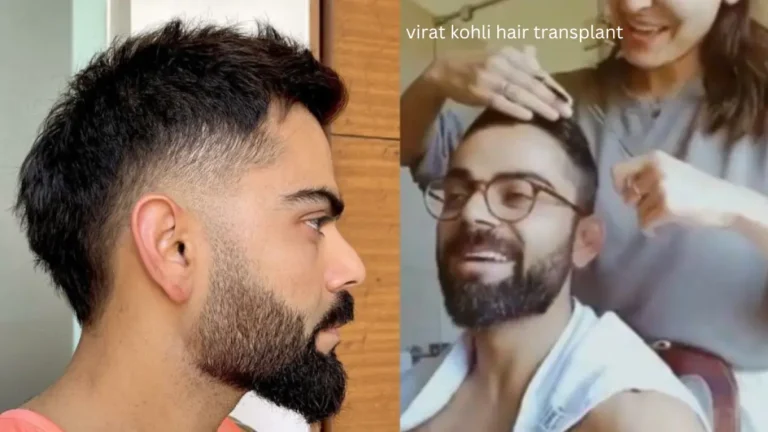
Virat Kohli is not only a cricket icon, but also a style inspiration for millions of people. The changes that have been decorated over the years have given rise to many conversations, especially about his hair. In this blog, we dive deeply in the discussion around Virat Kohli Hair Transplant, checking facts, experts and techniques that may have contributed to his hair makeover.
Who is Virat Kohli?
Virat Kohli is one of the most successful and recognized cricketers in the world. Kohli, a former captain of the Indian national team, is known for his aggressive batting style, unmatched stability, and charismatic appearance and both. Beyond cricket, he admits to develop his fitness, fashion sense and personal style – including his hair.
Virat Kohli’s Hair Loss Journey
Like many men in his 20 and 30s, Kohli allegedly experienced male pattern baldness, mainly affecting their hairline and temples. Fans saw a change in the density of their hair, speculation about the hair being thin. Despite this, Kohli maintained a well -designed appearance with a hairstyle, which cleverly disrupts thin areas.ohli, a former captain of the Indian national team, is known for his aggressive batting style, unmatched stability, and charismatic appearance and both. Beyond cricket, he admits to develop his fitness, fashion sense and personal style – including his hair.
Did He Really Get a Hair Transplant?
While there is no official confirmation, experts and supervisors strongly believe that Virat Kohli did a hair transplant. Their attention is to be noted, which includes a more defined hairline and full crown, indicating a well -executed process. Hair transplants are common among famous celebrities, and Kohli’s case is widely considered a successful example.
Which Hair Transplant Method Did He Choose?
Based on expert analysis, it is likely that Kohli chose for the Fue (follicular unit extraction) method. This modern technology involves extracting separate hair follicles from a donor area (usually behind the skull) and transplanting them into thin or balding areas. Fue is favored by its minimal scarring, natural looking results and low recovery time-it is making a favorite option among celebrities.
How Many Grafts Were Transplanted?
While there is no official confirmation from Virat Kohli or his team about the specifics of the process, hair transplant experts estimate that they will have received around 2,000 to 3,000 grafts. This estimate is based on noticeable improvement in their frontal hairline and overall hair density.
Typically, a graft has 1 to 4 hair follicles. For a person like Kohli – who needs moderate improvements mainly in frontal and temple zones – this range of grafts would be sufficient to achieve a natural, full look, which is seen in its recent public appearances.
Cost of Virat Kohli’s Hair Transplant
While the accurate cost of Kohli’s hair transplant is unknown, based on similar high-end processes in India, the number of grafts and the reputation of the clinic, may range from 2,00,000 to ₹ 5,00,000 or more. Given their position and the quality of the result, it is likely that Kohli chose a premium hair restoration center.
Celebrity Hair Transplants: A Growing Trend
Virat Kohli is included in the list of celebrities like Salman Khan, Akshay Kumar, and others who have allegedly done hair transplants. These changes highlight how accessible and effective modern hair restoration techniques have become – not only for celebrities, but also to gain confidence for anyone.
Expert Opinion: Why FUE Works
The FUE method remains one of the most recommended options by dermatologists and trichologists. It does not leave no linear scars, a quick recovery time, and allows for accurate, natural looking results. For public figure like Kohli, these benefits are important.
Before and After: Virat Kohli’s Hair Transformation
For the recent appearance compared to photos from early 2010, there is a clear difference between Virat’s hair density and line-up. Their current hairstyle looks natural, well mixed, and adds their sharp appearance to a testament for skills behind the process.
Final Thoughts
Virat Kohli’s transformation is not just about looks – it is about confidence and grooming. Whether you are a fan or a child transplant options, their journey provides valuable insight into modern hair restorations.
If you are considering a hair transplant and want professional guidance and natural looking results, visit Dr. Hanan Dermatology Specialty and Trichology Clinic-Your Reliable Destination for Specialist Hair Restoration Solutions.
Table of Contents
Laser Treatment for Face: Benefits, Types & What to Expect
Laser treatments for the face have revolutionized skincare, offering solutions for various skin concerns such as wrinkles, scars, pigmentation, and hair removal. These advanced procedures use laser technology to improve skin health, texture, and tone, making them a popular choice among individuals seeking youthful and radiant skin. But how do these treatments work, and what should you expect? This guide covers everything you need to know about laser treatment for the face.
Book Your Consultation Today
Visit Dr. Hanan Dermatology Specialty Clinic in Padur, OMR, Chennai. Schedule your consultation today and start your journey to fuller, healthier hair.
For more information and to book your appointment, visit our clinic or call us at the clinic’s contact details.
Types of Laser Treatments
Laser treatments are designed to target specific skin concerns. The most common types include:
1. Laser Skin Resurfacing
This procedure removes damaged skin layers, stimulates collagen production, and helps improve wrinkles, acne scars, and sun damage. It is an effective solution for achieving smoother and younger-looking skin.
2. Laser Hair Removal
For those struggling with unwanted facial hair, laser hair removal offers a long-term solution. It works by targeting hair follicles, reducing hair growth over multiple sessions.
3. Pigmentation and Scar Removal
Lasers can effectively treat hyperpigmentation, dark spots, melasma, and acne scars. They break down excess pigment in the skin, leading to a more even complexion.
4. Laser for Wrinkle Reduction
Laser therapy can tighten the skin, reducing the appearance of fine lines and wrinkles by boosting collagen production and skin elasticity.
How Laser Treatments Work
Laser treatments use focused light energy to penetrate the skin and stimulate natural healing. Here’s how they work:
- The laser removes the outermost layer of skin (epidermis) or heats the underlying layers (dermis) to promote collagen production.
- This results in smoother, firmer, and more even-toned skin over time.
- Different types of lasers (ablative and non-ablative) are used depending on the skin concern and desired results.
Benefits of Laser Treatment for Face
Laser treatments offer several benefits, including:
- Improved Skin Texture & Tone: Reduces roughness, uneven pigmentation, and dullness.
- Reduction of Fine Lines & Wrinkles: Promotes collagen growth for firmer skin.
- Scar & Pigmentation Treatment: Helps fade acne scars, sunspots, and discoloration.
- Minimized Pores: Shrinks enlarged pores and enhances skin smoothness.
- Long-Lasting Results: With proper care, laser treatments provide long-term improvements.
What to Expect During and After Treatment
During Treatment:
- The procedure usually lasts between 30 minutes to an hour, depending on the area being treated.
- Patients may experience mild discomfort, which is often managed with numbing creams.
After Treatment:
- Expect some redness, peeling, and sensitivity for a few days.
- The skin will gradually heal, revealing a fresher and more youthful look.
- Full results become noticeable within a few weeks to months.
- Sun protection is essential to prevent complications and maintain results.
Risks and Considerations
While laser treatments are generally safe, some risks include:
- Temporary redness, swelling, and irritation.
- Hyperpigmentation or hypopigmentation in some cases.
- Rare chances of infection or scarring if not done correctly.
Where to Get Laser Treatment for Face
Choosing a qualified dermatologist or certified laser specialist is crucial for safe and effective results. Some recommended clinics include:
- Sri Ramachandra Medical Centre
- Skinnfintee Cosmetic and Skin Care Clinic
- Kaya Skin Clinic
Conclusion
Laser treatments for the face provide effective solutions for various skin concerns, from wrinkles to pigmentation and hair removal. With advancements in technology, these treatments are safer and more accessible than ever. However, consulting a professional is essential to determine the best laser treatment for your skin type and concerns. For long-lasting results, follow post-treatment care guidelines and maintain a good skincare routine.
Frequently Asked Questions (FAQ)
1. Is laser treatment for the face safe?
Yes, when performed by a certified professional, laser treatments are generally safe. However, minor side effects like redness and swelling may occur.
2. How many sessions are needed for visible results?
The number of sessions depends on the skin concern. Typically, 3-6 sessions are required for optimal results.
3. Does laser treatment hurt?
Some discomfort may be felt, but numbing creams are used to minimize pain. Most patients describe the sensation as a mild stinging.
4. Can laser treatments be done on all skin types?
Yes, but different lasers work better for certain skin types. Consulting a dermatologist will help determine the best option for your skin.
5. How long does recovery take?
Recovery time varies based on the treatment. Non-ablative lasers have minimal downtime, while ablative lasers may require 1-2 weeks of healing.
Protein Treatment for Hair: Strengthen & Restore Your Locks
Protein Treatment for Hair: Healthy, shiny, and strong hair is a dream for many, but exposure to heat styling, pollution, chemical treatments, and improper hair care can weaken hair strands. This leads to breakage, frizz, and dryness. Protein treatments for hair help restore and strengthen hair by replenishing lost proteins and nutrients. In this guide, we’ll explore everything about protein treatments, their benefits, and how to choose the best one for your hair type.
Book Your Consultation Today
Visit Dr. Hanan Dermatology Specialty Clinic in Padur, OMR, Chennai. Schedule your consultation today and start your journey to fuller, healthier hair.
For more information and to book your appointment, visit our clinic or call us at the clinic’s contact details.
What is a Protein Treatment?
Protein treatments are hair care solutions formulated with essential proteins like keratin and collagen to repair damaged hair, strengthen the strands, and protect against future damage. These treatments work by penetrating the hair shaft, filling in gaps, and reinforcing the structure of weakened hair fibers.
Why Do You Need a Protein Treatment?
- Excessive heat styling and chemical processing strip hair of natural proteins.
- Pollution and UV exposure weaken hair structure.
- Colored and chemically treated hair is more prone to damage.
- Lack of proper hair care leads to protein loss and hair breakage.
Benefits of Protein Treatments
Using a protein treatment regularly can significantly improve the health and appearance of your hair. The key benefits include:
- Strengthens hair: Reinforces hair structure, reducing breakage.
- Restores moisture balance: Helps retain hydration while preventing excessive dryness.
- Reduces frizz and smooths texture: Makes hair more manageable and silky.
- Enhances shine: Adds a natural, glossy finish to dull hair.
- Protects against damage: Shields hair from heat and environmental stressors.
Types of Protein Treatments
There are different types of protein treatments to cater to various hair needs.
1. Deep Conditioning Protein Masks
- Provides intense repair for extremely damaged hair.
- Ideal for chemically processed and heat-treated hair.
- Recommended use: Once every 2-4 weeks.
2. Protein-Rich Conditioners
- Daily or weekly use to maintain protein levels.
- Helps in reducing minor hair damage.
- Best for regular maintenance of healthy hair.
3. Leave-in Protein Treatments
- Lightweight formulas that provide protection throughout the day.
- Prevents breakage and smooths hair cuticles.
- Suitable for all hair types.
4. DIY Protein Treatments
- Natural ingredients like eggs, yogurt, and coconut oil provide protein nourishment.
- Cost-effective and chemical-free.
- Great for those who prefer organic hair care solutions.
5. Salon Protein Treatments
- Professional keratin and collagen treatments offer long-lasting results.
- Best for those with severely damaged or frizzy hair.
- Requires expert application.
How to Choose the Right Protein Treatment
Choosing the right protein treatment depends on your hair type and level of damage:
- Fine Hair: Use lightweight protein sprays or leave-in conditioners.
- Thick Hair: Deep conditioning protein masks work best.
- Curly Hair: Opt for moisture-rich protein treatments to prevent excessive dryness.
- Color-Treated Hair: Choose protein treatments specifically formulated for colored hair.
Warning: Protein Overload
Excessive protein treatments can lead to stiff, brittle hair. It’s essential to balance protein with moisture to maintain hair health.
Best Protein Treatments for Hair in 2024
Here are the top 5 protein treatments highly recommended by hair experts:
- Hi-Pro-Pac Extremely Intense Protein Treatment – Best for strengthening hair and preventing split ends.
- Elizavecca CER 100 Collagen Coating Hair Protein Treatment – Ideal for chemically treated and damaged hair.
- Luxliss Keratin Protein Replenish Hair Serum – Hydrates hair while reducing dandruff.
- KERAFUTURE Keratin Protein Hair Care Serum – Anti-frizz and heat-protectant formula.
- Ouai Hair Mask Treatment – Perfect for dry, curly, and frizzy hair.
How to Apply a Protein Treatment at Home
Step-by-Step Guide
- Wash your hair with a sulfate-free shampoo to remove buildup.
- Apply the protein treatment evenly throughout damp hair.
- Leave it on for the recommended time (usually 10-30 minutes).
- Rinse thoroughly with lukewarm water.
- Follow up with a deep conditioner to maintain moisture balance.
- Style as usual, avoiding excessive heat styling.
FAQs About Protein Treatments
1. Can protein treatments damage hair?
Yes, overuse can cause protein overload, making hair stiff and brittle. Balance with moisture treatments.
2. How often should I use a protein treatment?
Depending on hair damage, use once a week for severe damage or once a month for maintenance.
3. What’s the difference between protein and keratin treatments?
Keratin treatments smooth and straighten hair, while protein treatments strengthen and repair hair structure.
4. Can I use a protein treatment on colored hair?
Yes, but choose one specifically designed for color-treated hair to prevent fading.
White Patches on Skin Treatment: Causes, Remedies, and Solutions
White Patches on Skin Treatment: White patches on the skin can be a cause of concern for many individuals. These patches may appear due to various medical conditions and can impact self-confidence. While some cases are temporary, others may require long-term treatment. Early diagnosis and proper treatment are crucial for managing and restoring skin pigmentation. In this article, we will discuss the causes, medical treatments, home remedies, and preventive measures for white patches on the skin.
Book Your Consultation Today
Visit Dr. Hanan Dermatology Specialty Clinic in Padur, OMR, Chennai. Schedule your consultation today and start your journey to fuller, healthier hair.
For more information and to book your appointment, visit our clinic or call us at the clinic’s contact details.
Causes of White Patches on Skin
White patches can result from different conditions, including:
1. Vitiligo
Vitiligo is an autoimmune condition where the body’s immune system attacks melanocytes, the cells responsible for producing skin pigment. This leads to the loss of skin color in patches.
2. Pityriasis Alba
A common skin condition in children, pityriasis alba causes dry, scaly white patches on the face and arms. It is usually associated with eczema and resolves over time.
3. Fungal Infections (Tinea Versicolor)
A yeast infection on the skin can cause small, discolored patches that may appear white, pink, or brown. These patches often become more noticeable in humid climates.
4. Nutritional Deficiencies
A lack of essential nutrients, such as Vitamin B12, Vitamin D, copper, and iron, can lead to hypopigmentation.
5. Skin Trauma or Burns
Post-inflammatory hypopigmentation can occur after skin injuries, burns, or chemical exposure, causing temporary or permanent white patches.
6. Other Medical Conditions
Certain conditions like psoriasis, eczema, and leprosy can also cause white patches as a symptom.
Diagnosis and When to See a Doctor
If you notice persistent white patches on your skin, consult a dermatologist. Diagnosis may involve:
- Physical Examination – Observing the patches and skin condition.
- Wood’s Lamp Test – Using UV light to examine pigmentation changes.
- Skin Biopsy – A small skin sample may be taken for analysis.
- Blood Tests – Checking for autoimmune disorders or nutritional deficiencies.
Medical Treatments for White Patches
1. Topical Treatments
- Corticosteroids – These creams can help restore skin color, especially if applied early.
- Topical Calcineurin Inhibitors (Tacrolimus, Pimecrolimus) – Used for small patches to stimulate pigment production.
- Janus Kinase (JAK) Inhibitors – Help restore pigmentation by reducing inflammation.
2. Light Therapy
- Photochemotherapy (PUVA) – Involves applying medication to the skin before exposure to UVA light.
- Narrow-Band UVB Therapy – Direct UVB exposure can stimulate melanocytes and restore skin color.
3. Depigmentation Therapy
For widespread vitiligo, depigmenting the remaining skin to achieve an even tone may be an option.
4. Medical-Grade Skin Peels
Chemical peels can exfoliate the top layers of skin and stimulate new pigment production.
Cosmetic and Camouflage Solutions
- Skin Camouflage Creams – Specially formulated concealers can temporarily cover white patches.
- Tattooing (Micropigmentation) – Permanent cosmetic tattooing can help blend white patches with surrounding skin.
Home Remedies and Lifestyle Management
1. Natural Remedies
- Coconut Oil – Moisturizes and soothes the skin, promoting healing.
- Aloe Vera Gel – Known for its anti-inflammatory and healing properties.
- Honey – Helps hydrate the skin and has antimicrobial benefits.
2. Dietary Changes
Consuming foods rich in vitamins and minerals, such as leafy greens, nuts, and dairy, can support skin health.
3. Sun Protection
Using sunscreen with SPF 30 or higher helps protect depigmented skin from sun damage and prevents further discoloration.
White Patches on Skin Treatment Preventive Measures
- Maintain good skin hygiene to prevent infections.
- Avoid harsh chemicals and skin irritants.
- Strengthen immunity through a balanced diet and hydration.
Conclusion
White patches on the skin can be caused by various conditions, from autoimmune disorders to fungal infections. While medical treatments, topical applications, and light therapy can restore pigmentation, natural remedies and preventive care also play a role in managing these patches. If you notice persistent white patches, consulting a dermatologist for a proper diagnosis and treatment plan is essential. With the right approach, skin pigmentation can often be restored, helping you regain confidence in your skin’s appearance.
Best Hair Transplant in Tamil Nadu: Top Clinics, Cost & Techniques
Hair transplant procedures have become increasingly popular among individuals experiencing hair loss or baldness. Tamil Nadu, particularly Chennai, is home to some of the best hair transplant clinics in India, offering advanced techniques at competitive prices. Choosing the right clinic and doctor is crucial for a successful and natural-looking hair transplant. This article provides a detailed guide on the best hair transplant options in Tamil Nadu, including top clinics, costs, techniques, and recovery tips.
Book Your Consultation Today
Visit Dr. Hanan Dermatology Specialty Clinic in Padur, OMR, Chennai. Schedule your consultation today and start your journey to fuller, healthier hair.
For more information and to book your appointment, visit our clinic or call us at the clinic’s contact details.
Hair Transplant Techniques
Before selecting a clinic, it is essential to understand the different hair transplant techniques available. Each method has its benefits and is suited for different hair loss conditions.
Follicular Unit Extraction (FUE)
- A minimally invasive method where individual hair follicles are extracted and implanted.
- No visible scarring and a faster recovery period.
- Suitable for patients looking for a natural hairline with minimal downtime.
Follicular Unit Transplantation (FUT)
- Involves removing a strip of skin with hair follicles from the donor area.
- Higher graft survival rate but may leave a linear scar.
- Recommended for patients requiring a large number of grafts.
Direct Hair Implantation (DHI)
- An advanced technique where hair follicles are extracted and implanted simultaneously.
- Offers high precision and density.
- Performed with specialized tools for better results.
Robotic Hair Transplant
- Uses AI-powered robotic technology for precise hair follicle extraction and placement.
- Minimizes human error and speeds up the procedure.
- Best suited for individuals looking for a high-tech, minimally invasive approach.
Factors to Consider When Choosing a Hair Transplant Clinic
Choosing the best hair transplant clinic involves several factors:
- Expertise and Experience – Ensure the clinic has experienced surgeons specializing in hair restoration.
- Success Rate and Reviews – Look for patient testimonials and before-and-after images.
- Advanced Technology – Clinics using the latest equipment ensure better results.
- Cost and Affordability – Compare the price based on the number of grafts required.
- Post-Operative Care – Choose a clinic that provides proper follow-up consultations and care.
Top Hair Transplant Clinics in Tamil Nadu
Here are some of the best hair transplant clinics in Tamil Nadu known for their high-quality procedures:
1. DHI India – Chennai
- Specializes in Direct Hair Implantation (DHI) technique.
- Offers natural results with high graft survival rates.
- Personalized treatment plans for every patient.
2. Eugenix Hair Sciences
- One of the leading hair restoration clinics in India.
- Experienced doctors with high success rates.
- Uses advanced techniques to ensure natural hair growth.
3. Tamira Life Clinic
- Provides both FUE and FUT hair transplants.
- High patient satisfaction with skilled dermatologists.
- Offers affordable packages with post-operative care.
4. Hande Hospital
- Known for cost-effective hair transplant procedures.
- Experienced dermatologists and plastic surgeons.
- Provides customized treatment plans.
5. Advanced Grohair Clinic
- Specializes in FUE hair transplants.
- Offers free consultations and affordable pricing.
- Uses the latest technology for precise graft implantation.
6. Pristyn Care
- Nationwide presence with expert hair transplant surgeons.
- Offers minimally invasive hair transplant procedures.
- Focuses on patient safety and post-op recovery.
Cost of Hair Transplant in Tamil Nadu
The cost of a hair transplant varies based on the clinic, technique used, and number of grafts required. On average:
- FUE Hair Transplant – ₹40,000 to ₹1,50,000
- FUT Hair Transplant – ₹30,000 to ₹1,20,000
- DHI Hair Transplant – ₹80,000 to ₹2,50,000
- Robotic Hair Transplant – ₹1,50,000 to ₹3,00,000
Factors affecting cost:
- Number of grafts needed.
- Experience of the surgeon.
- Clinic reputation and location.
- Post-operative care and medications.
Recovery and Post-Transplant Care
After a hair transplant, proper care is essential for optimal results:
- Immediate Aftercare: Avoid touching the scalp, strenuous activities, and sun exposure for at least two weeks.
- Healing Period: Redness and mild swelling are common but subside within a few days.
- Hair Shedding: Transplanted hair may shed after 2-3 weeks before new growth starts.
- Final Results: Noticeable hair growth occurs after 6-12 months.
Success Stories and Patient Testimonials
Many patients have reported positive experiences with hair transplants in Tamil Nadu. Here are some success stories:
- A 35-year-old IT professional from Chennai underwent an FUE transplant and saw significant hair regrowth within 9 months.
- A businessman from Coimbatore opted for the DHI method and achieved a fuller hairline within 6 months.
Conclusion
Choosing the best hair transplant clinic in Tamil Nadu depends on multiple factors, including the technique, doctor expertise, and cost. Clinics like DHI India, Eugenix Hair Sciences, and Tamira Life Clinic offer top-quality procedures with high success rates. If you are considering a hair transplant, consult with a qualified specialist to determine the best treatment for your needs.
Rohit Sharma Hair Transplant – Speculation or Reality?
Rohit Sharma, the Indian cricket superstar, is widely known for his explosive batting and remarkable leadership on the field. Over the years, fans and media have noticed a significant change in his hairline, leading to speculation about whether he has undergone a hair transplant. While the cricketer has not publicly addressed these rumors, the discussion continues to grow, fueled by visual comparisons and the rising trend of hair transplants among celebrities. In this article, we explore the speculation surrounding Rohit Sharma’s hair transplant and the broader trend of hair restoration in sports and entertainment.
Book Your Consultation Today
Visit Dr. Hanan Dermatology Specialty Clinic in Padur, OMR, Chennai. Schedule your consultation today and start your journey to fuller, healthier hair.
For more information and to book your appointment, visit our clinic or call us at the clinic’s contact details.
The Speculation Around Rohit Sharma’s Hair Transplant
The buzz around Rohit Sharma’s potential hair transplant started when fans began comparing his older pictures with recent ones. Many believe that his hairline appears denser and more defined, suggesting a possible hair restoration procedure. While hair loss is a natural phenomenon for many individuals, including athletes, the noticeable transformation in Rohit’s hair has led to widespread curiosity.
Social media discussions and forums have been abuzz with before-and-after comparisons, leading many to believe that he might have opted for a hair transplant. However, without official confirmation, this remains purely speculative.
No Official Confirmation
Despite the ongoing discussions, Rohit Sharma has never publicly confirmed or denied undergoing a hair transplant. Unlike some celebrities who openly discuss their cosmetic procedures, Rohit has maintained silence on this matter. This highlights an important aspect of personal privacy, as individuals, even public figures, have the right to keep such choices undisclosed.
The Rise of Hair Transplants Among Celebrities and Athletes
Hair transplants have become increasingly popular among celebrities, athletes, and influencers due to their high success rates and natural-looking results. In a profession where public image plays a crucial role, many stars opt for hair restoration to maintain a youthful appearance.
Several sports personalities, including Virender Sehwag and Gautam Gambhir, have openly undergone hair transplants. The pressure of media attention and brand endorsements often pushes public figures to enhance their appearance, making such procedures common in the industry.
Understanding Hair Transplant Procedures
Hair transplantation is a medical procedure that involves transferring hair follicles from a donor area (usually the back of the scalp) to areas experiencing hair loss. The most common techniques include:
- Follicular Unit Extraction (FUE): Individual hair follicles are extracted and implanted, resulting in minimal scarring.
- Follicular Unit Transplantation (FUT): A strip of hair-bearing skin is removed, and individual follicles are transplanted.
These procedures have advanced significantly, offering natural and long-lasting results with minimal downtime.
FAQs
1. Did Rohit Sharma undergo a hair transplant?
There is no official confirmation from Rohit Sharma about undergoing a hair transplant. However, fans and experts speculate that he might have had a procedure due to visible changes in his hair density over the years.
2. What kind of hair transplant procedure might he have opted for?
If he did undergo a transplant, he may have chosen the FUE (Follicular Unit Extraction) method, which is a common and minimally invasive technique among celebrities.
3. When did Rohit Sharma’s hair transformation become noticeable?
People started noticing a difference in his hairline and density around the mid to late 2010s, leading to speculation about a possible hair restoration treatment.
4. Why do celebrities, including cricketers, opt for hair transplants?
Public figures like cricketers are constantly in the limelight, and their appearance matters for endorsements, media appearances, and personal confidence. Hair transplants help maintain a youthful look.
5. How much does a hair transplant cost in India?
The cost of a hair transplant in India varies based on the clinic, surgeon expertise, and the number of grafts required. On average, it can range between ₹50,000 to ₹4,00,000.
6. Can a hair transplant affect an athlete’s performance?
No, a properly done hair transplant does not impact an athlete’s performance. The recovery period is short, and most athletes resume training within a few weeks.
7. What are some other Indian cricketers rumored to have undergone hair transplants?
Apart from Rohit Sharma, cricketers like Virender Sehwag, Sourav Ganguly, Gautam Gambhir, and Harsha Bhogle have also been rumored to have undergone hair restoration treatments.
8. What are some natural alternatives to hair transplants?
Some alternatives include PRP (Platelet-Rich Plasma) therapy, Minoxidil, Finasteride, and a healthy diet rich in biotin and proteins to promote hair growth.
7 Days Glowing Skin Challenge: Your Ultimate Guide to Radiant Skin
Everyone desires healthy, glowing skin, but achieving it requires more than just applying skincare products. A combination of a proper skincare routine, hydration, a healthy diet, and self-care practices can transform your skin. This 7 Days Glowing Skin Challenge is designed to enhance your natural glow with simple yet effective steps. Follow this plan to achieve clear, radiant skin in just one week.
Book Your Consultation Today
Visit Dr. Hanan Dermatology Specialty Clinic in Padur, OMR, Chennai. Schedule your consultation today and start your journey to fuller, healthier hair.
For more information and to book your appointment, visit our clinic or call us at the clinic’s contact details.
Why Skincare Matters
Our skin reflects our internal health and external care. Factors like pollution, stress, poor diet, and lack of hydration can dull our complexion. A structured skincare routine ensures:
- Proper cleansing and hydration
- Removal of dead skin cells
- Skin nourishment with essential nutrients
- Protection from environmental damage
By following this challenge, you’ll learn how to nurture your skin inside and out for long-term results
7-Day Glowing Skin Routine
Day 1: Double Cleanse Your Face
- Start with an oil-based cleanser to remove makeup and dirt.
- Follow with a gentle foaming or gel-based cleanser.
- Rinse with lukewarm water and pat dry.
- Apply a hydrating toner to prep your skin for the next steps.
Day 2: Follow a Separate Evening Routine
- Morning skincare: Use a mild cleanser, vitamin C serum, moisturizer, and sunscreen.
- Night routine: Cleanse, apply a hydrating serum, use retinol (if suitable), and finish with a night cream.
- Night skincare helps repair the skin while you sleep.
Day 3: Exfoliate Your Face and Body
- Use a gentle scrub or chemical exfoliant (AHA/BHA) to remove dead skin cells.
- Exfoliate no more than twice a week to avoid irritation.
- Follow up with a soothing moisturizer.
Day 4: Hydrate – Inside and Out
- Drink at least 8 glasses of water to keep skin plump and hydrated.
- Use a hyaluronic acid serum to lock in moisture.
- Apply a thick layer of moisturizer to prevent water loss.
Day 5: Steam and Facial Massage
- Steaming opens pores and removes toxins.
- Massage your face using a facial oil to improve circulation and lymphatic drainage.
- A simple 5-minute massage can enhance your skin’s elasticity and glow.
Day 6: Eat Skin-Boosting Fruits
- Vitamin C-rich fruits (oranges, strawberries, kiwi) boost collagen production.
- Avocados and nuts provide healthy fats for skin elasticity.
- Leafy greens help detoxify and reduce inflammation.
Day 7: Prioritize Sleep and Rest
- Aim for 7-9 hours of quality sleep to allow skin to regenerate.
- Sleep deprivation can lead to dark circles, dull skin, and premature aging.
- Try a silk pillowcase to reduce skin friction and retain moisture.
Additional Skincare Tips for Lasting Results
- Use Skin Serums: Vitamin C, hyaluronic acid, and retinol can enhance your glow.
- Protect from UV Rays: Always wear sunscreen (SPF 30+), even on cloudy days.
- Eat Healthy: Consume antioxidants, omega-3 fatty acids, and hydration-rich foods.
- Manage Stress: Practice meditation, yoga, or deep breathing to prevent breakouts.
- Try Home Remedies: Use aloe vera, honey, yogurt, or cucumber for natural skin nourishment.
The Role of Diet in Achieving Glowing Skin
Your diet plays a crucial role in your skin’s appearance. A healthy skin diet includes:
- Anti-inflammatory foods: Leafy greens, nuts, seeds, and fatty fish.
- Hydration: Water, green tea, and fresh juices.
- Collagen-boosting foods: Berries, citrus fruits, and bone broth.
- Avoid processed foods: Sugar, fried items, and artificial additives can trigger breakouts.
Conclusion
This 7 Days Glowing Skin Challenge is a simple yet powerful way to achieve naturally radiant skin. By following these daily steps, nourishing your body with the right foods, and staying consistent, you’ll see visible improvements in your skin’s health. Keep up these habits beyond the challenge for long-lasting, beautiful skin.
Skin Treatments for Glowing Skin: Best Dermatologist in Chennai
Skin Treatments for Glowing Skin: Best Dermatologist in Chennai
Reveal your natural glow with advanced skin treatments for glowing skin by the best dermatologist in Chennai. Feel confident in your skin.

Skin Treatments for Glowing Skin: Achieving glowing skin is a common skincare goal, but factors like pollution, stress, poor diet, and aging can make skin look dull and tired. The good news is that various skin treatments can help restore your skin’s natural radiance. Whether you prefer professional dermatological treatments or natural home remedies, this guide will explore the best skin treatments for a long-lasting glow.
Professional Skin Treatments for Glowing Skin
For those seeking long-term results, professional dermatological treatments offer scientifically proven methods to enhance skin brightness and improve overall texture.
1. Medicated Anti-Dandruff Shampoos
Chemical peels use acids like glycolic, lactic, or salicylic acid to exfoliate dead skin cells and promote skin renewal. They help in reducing pigmentation, fine lines, and dullness, revealing a brighter complexion.
2. Microdermabrasion
This treatment involves a minimally invasive exfoliation process that removes dead skin layers, leaving the skin smooth and radiant. It is suitable for treating dull skin, mild acne scars, and sun damage.
3. Laser Skin Resurfacing
Laser treatments such as Fractional CO2 and Intense Pulsed Light (IPL) therapy target deep skin layers to stimulate collagen production, reduce dark spots, and enhance skin tone.
4. Hydrafacial
HydraFacial combines cleansing, exfoliation, extraction, hydration and antioxidant protection. This quick, non-invasive treatment is highly effective in achieving an immediate brightness and deep hydration.
5. LED Light Therapy
This treatment uses various wavelengths of light to treat skin concerns. Red light therapy promotes collagen and reduces inflammation, while blue light therapy helps with acne and oil control.
6. Mesotherapy & PRP Therapy
Mesotherapy involves injecting vitamins and serums in the skin for hydration and brightness. PRP (platelet-rich plasma) therapy, also known as “Vampire Facial”, stimulates skin renewal by using growth factors from the patient’s own blood.
7. Oxygen Facials
Oxygen facials infuses the skin with pure oxygen and hydrating serum, improve circulation and give the skin an immediate, healthy glow.
Natural & Home-Based Skin Treatments
Many DIY remedies for those who like natural remedies can improve skin glow without professional intervention.
1. DIY Face Masks for Radiance
- Honey and turmeric mask: Natural antibacterial and bright properties.
- Aloe vera and yogurt masks: hydrate and calms the skin.
2. Facial Massages & Gua Sha Therapy
Massaging the skin with natural oils or using devices like Gua Sha promotes blood circulation and gives a natural glow.
3. Essential Oils & Natural Serums
- Rosehip oil: Rich in vitamin C helps reduce dark spots.
- Jojoba oil:Oil balances production and provides hygiene.
Skincare Routine for Long-Term Glow
Maintaining a proper skincare routine is essential for glowing skin.
1. Cleansing & Exfoliation
- Use a soft cleanser to remove dirt and oil.
- Exfoliate 2-3 times a week to remove dead skin cells.
2. Hydration & Moisturization
Hydrating materials such as hyaluronic acid and ceramides help to keep the skin thicker and bright.
3. Sun Protection
Applying sunscreen (SPF 30 or higher) daily prevents skin damage and premature aging.
4. Nutrition & Lifestyle
- Eat antioxidant-rich foods like berries, nuts, and leafy greens.
- Drink plenty of water for skin hydration.
- Get enough sleep and manage stress for healthy skin.
Choosing the Right Treatment for Your Skin Type
Dry skin: hydrating treatment such as HydraFacial and mesotherapy.
Oily skin: chemical peels and laser resurrection help to control oil and acne.
Combination Skin: A mixture of exfoliation, hydration and safety is ideal.
Sensitive skin: gentle treatment such as LED therapy and oxygen facials..
Conclusion
To achieve glowing skin requires a combination of professional treatment, natural remedies and a consistent skincare routine. Whether you choose dermatological treatment or home-based treatment, taking care of your skin in the right ways will help maintain a young and bright color.
Table of Contents
Permanent PRP Hair Treatment Near Me: A Complete Guide
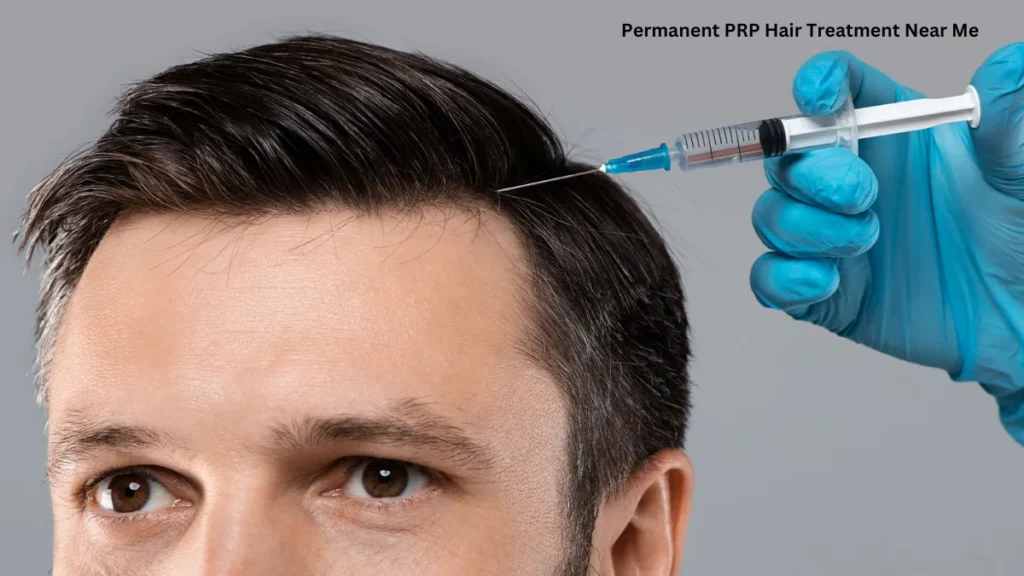
Hair loss can be distressing, leading many individuals to seek effective and long-lasting treatments. One of the most popular and promising solutions today is PRP (Platelet-Rich Plasma) hair treatment. If you are searching for a “permanent PRP hair treatment near me,” this guide will help you understand what PRP is, its effectiveness, cost, and how to find the best clinic for your needs.
Book Your Consultation Today
Visit Dr. Hanan Dermatology Specialty Clinic in Padur, OMR, Chennai. Schedule your consultation today and start your journey to fuller, healthier hair.
For more information and to book your appointment, visit our clinic or call us at the clinic’s contact details.
What is PRP Hair Treatment?
PRP hair treatment is a non-surgical procedure that uses a patient’s own blood to stimulate hair growth. The process involves drawing a small amount of blood, separating the platelets using a centrifuge, and injecting the concentrated plasma into the scalp. Platelets contain growth factors that promote hair follicle regeneration, improve blood circulation, and strengthen hair shafts.
Benefits of PRP Hair Treatment:
- Stimulates natural hair growth
- Increases hair density and thickness
- Non-invasive with minimal downtime
- Safe and natural, as it uses the patient’s own blood
- Suitable for both men and women experiencing hair thinning
Is PRP Hair Treatment Permanent?
One of the most common questions is whether PRP treatment provides permanent results. While PRP significantly improves hair growth and density, it is not a one-time solution. The longevity of the results depends on individual factors, including age, the severity of hair loss, and overall scalp health.
Factors Influencing PRP Treatment Longevity:
- The number of initial sessions (usually 3-4 sessions over several months)
- Maintenance treatments (recommended every 6-12 months)
- Lifestyle factors like diet, stress levels, and hair care routine
- The underlying cause of hair loss (genetic, hormonal, or medical conditions)
Who is an Ideal Candidate for PRP Hair Treatment?
PRP therapy is ideal for individuals experiencing early-stage hair thinning and hair loss. It is effective for:
- Men and women with androgenetic alopecia (pattern baldness)
- Those experiencing hair thinning due to stress or hormonal imbalances
- Individuals looking for a non-surgical hair restoration method
- Patients who want to enhance the results of a hair transplant
Finding the Best Permanent PRP Hair Treatment Near You
Choosing the right clinic is crucial to ensure safe and effective results. Here’s how to find the best PRP hair treatment provider near you:
1. Check Clinic Reputation:
Look for clinics with experienced dermatologists or hair restoration specialists. Read online reviews and testimonials to gauge customer satisfaction.
2. Verify Doctor’s Credentials:
Ensure the doctor performing the treatment is certified and has experience in PRP therapy.
3. Ask About the Procedure:
A good clinic will offer a consultation to discuss the process, expected results, and maintenance plans.
4. Compare Costs and Packages:
Different clinics may offer varying prices. Look for a balance between affordability and quality of service.
What to Expect from PRP Hair Treatment?
Step-by-Step Process:
- Blood Draw: A small amount of blood is taken from the patient.
- Centrifugation: The blood is processed to isolate platelet-rich plasma.
- Injection: The PRP is injected into targeted areas of the scalp.
- Recovery: Minimal downtime, with mild redness or tenderness lasting a day or two.
When Will You See Results?
- First 3 Months: Reduction in hair shedding
- 4-6 Months: Visible hair regrowth and increased thickness
- 12 Months: Full effects of the treatment, with noticeable hair density improvement
Cost of Permanent PRP Hair Treatment
The cost of PRP treatment varies based on location, clinic expertise, and the number of sessions required. On average:
- Single session: $500 – $1,500
- Full treatment package (3-4 sessions): $1,500 – $4,000
- Maintenance sessions: $400 – $800 per session
Insurance usually does not cover PRP for hair loss as it is considered a cosmetic procedure.
Potential Risks and Side Effects
PRP hair treatment is generally safe, but minor side effects may occur, such as:
- Mild pain or redness at the injection site
- Temporary swelling or bruising
- Rare risk of infection if performed by an inexperienced practitioner
To minimize risks, always choose a certified and experienced provider.
Success Stories and Real Patient Testimonials
Many patients have experienced significant hair growth and improved hair thickness after PRP treatment. Before-and-after pictures from reputable clinics can provide insight into the potential results.
FAQs About Permanent PRP Hair Treatment Near Me
1. How Many PRP Sessions Are Needed for Long-Term Results?
Most individuals require 3-4 initial sessions, followed by maintenance treatments every 6-12 months.
2. Can PRP Completely Stop Hair Loss?
PRP can slow hair loss and promote regrowth, but it may not completely stop hair loss caused by genetic factors.
3. How Soon Can Results Be Seen?
Noticeable improvements usually appear within 3-6 months.
How to Grow Hair Faster in 1 Week: Effective Tips and Remedies
How to Grow Hair Faster in 1 Week: Many people desire longer, healthier hair, and while hair growth is a natural process, certain habits and remedies can help stimulate it faster. While it’s impossible to grow several inches in just a week, you can enhance hair health and create an environment that promotes faster growth. This guide covers practical steps to improve hair growth naturally.
Book Your Consultation Today
Visit Dr. Hanan Dermatology Specialty Clinic in Padur, OMR, Chennai. Schedule your consultation today and start your journey to fuller, healthier hair.
For more information and to book your appointment, visit our clinic or call us at the clinic’s contact details.
Hair Care Routine for Faster Growth
Scalp Massage with Essential Oils
A scalp massage increases blood circulation, delivering oxygen and nutrients to hair follicles. Using essential oils such as castor oil, coconut oil, or rosemary oil can further stimulate growth.
- Warm the oil slightly and apply it to your scalp.
- Massage in circular motions for 5-10 minutes.
- Leave it on for at least an hour or overnight before washing.
Proper Hair Washing Routine
Overwashing can strip natural oils, while infrequent washing may lead to buildup.
- Use a mild, sulfate-free shampoo and wash hair 2-3 times a week.
- Always follow up with a moisturizing conditioner to prevent dryness and breakage.
Deep Conditioning and Hair Masks
A deep conditioning treatment can strengthen hair and reduce split ends.
- Try a banana and honey mask or yogurt and egg mask for hydration.
- Apply once a week for best results.
Diet and Nutrition for Hair Growth
Protein-Rich Foods for Stronger Hair
Hair is primarily made of keratin, a protein. Eating protein-rich foods supports hair health.
- Best sources: Eggs, fish, chicken, beans, and nuts.
Importance of Vitamins
- Biotin: Strengthens hair and boosts growth (found in eggs, nuts, and bananas).
- Vitamin E: Improves scalp circulation (found in almonds and avocados).
- Omega-3 fatty acids: Keep hair shiny and healthy (found in fish, flaxseeds, and walnuts).
Hydration and Hair Health
Drinking 8-10 glasses of water daily keeps the scalp hydrated, reducing dryness and breakage.
Home Remedies for Faster Hair Growth
Onion Juice Application
Onion juice is rich in sulfur, which stimulates collagen production and hair growth.
- Extract onion juice and apply it to the scalp.
- Leave it for 15-30 minutes before washing.
Aloe Vera Gel Treatment
Aloe vera has enzymes that promote hair growth and reduce dandruff.
- Apply fresh aloe vera gel to the scalp and leave it for 30 minutes.
- Rinse with a mild shampoo.
Rice Water Rinse
Rice water contains amino acids that strengthen hair and improve elasticity.
- Soak rice in water for a few hours, then strain.
- Use the water to rinse your hair after shampooing.
Lifestyle Changes to Boost Hair Growth
Reduce Stress
Stress can trigger hair loss. Engage in stress-relieving activities like yoga, meditation, or exercise.
Get Enough Sleep
Adequate sleep is essential for cell regeneration and hair follicle health. Aim for 7-8 hours per night.
Avoid Heat Styling
Excessive use of heat tools can weaken hair. Opt for heat-free styling methods and always use a heat protectant.
Common Mistakes to Avoid
- Overwashing hair, which strips essential oils.
- Tight hairstyles, which cause hair breakage and traction alopecia.
- Using harsh chemicals, such as bleach and perming agents, that damage hair structure.
Expert Tips for Long-Term Hair Growth
Regular Trims
How to Grow Hair Faster in 1 Week and Trimming split ends every 6-8 weeks prevents breakage and keeps hair healthy.
Scalp Exfoliation
Using a gentle scalp scrub once a week removes dead skin cells and enhances follicle function.
Choose the Right Hair Products
Opt for sulfate-free, paraben-free, and alcohol-free products to maintain hair moisture and prevent damage.
Conclusion
Growing hair faster in one week requires a combination of proper hair care, a nutrient-rich diet, home remedies, and healthy lifestyle choices. While you may not see inches of growth instantly, following these tips will create the best conditions for stronger, healthier hair over time. Be patient, stay consistent, and your hair will thank you!


